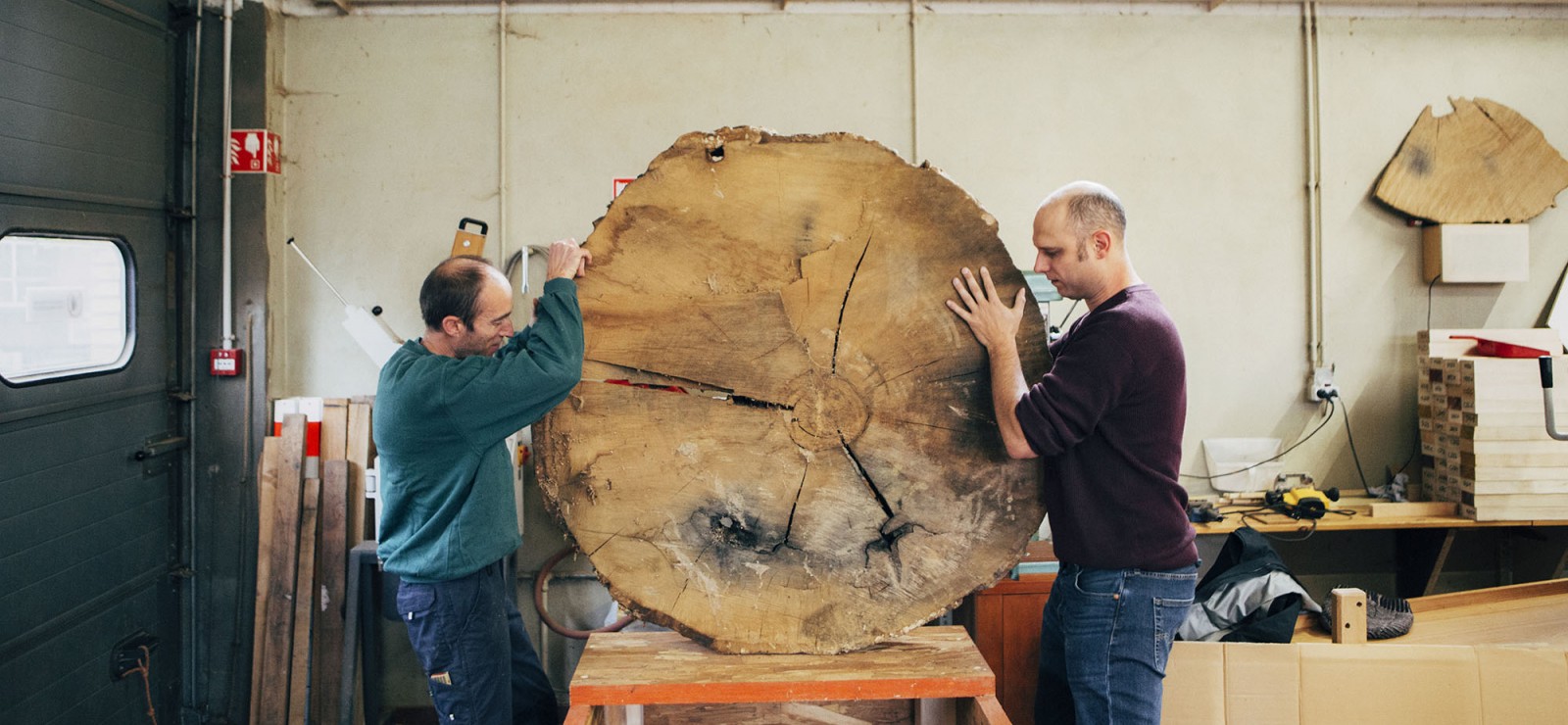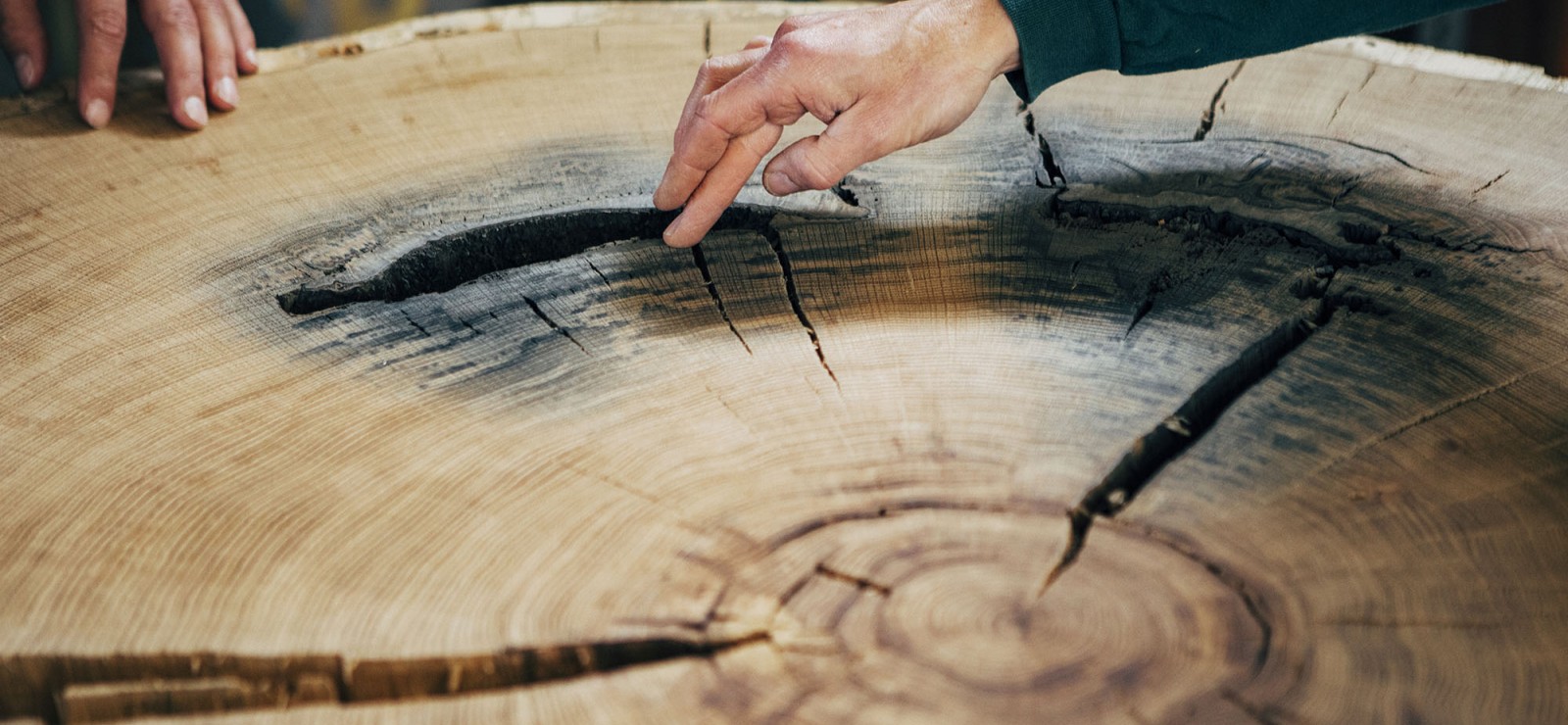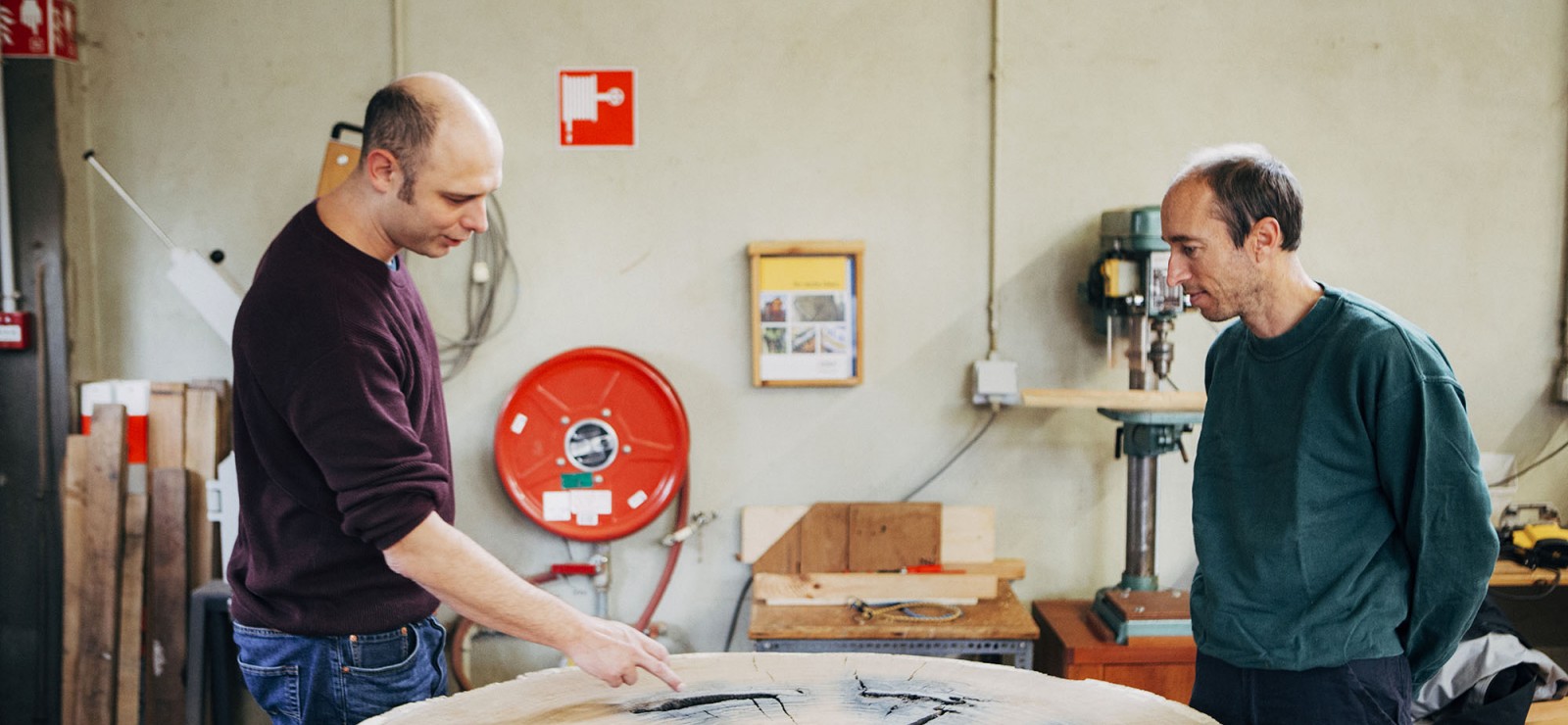What if trees could talk? Well, every so often they do. In doing so, they give a glimpse of the past. For example, a 250-year-old oak in the castle grounds at Elverdinge near Ypres tells us more about the First World War. The tree survived this war, despite the incessant bombs. The Woodlab at Ghent University tells us the touching story of this oak tree.
What began with a question about some old, diseased trees at the castle estate in Elverdinge, quickly turned into a tale that revealed the region’s battle history. When forest ranger Pierre Hubau (Nature and Forest Agency) first saw the black discolouration on the trunk of a monumental oak tree that had been chopped down, he immediately had his suspicions: could they be remnants of the First World War? After all, he had previously discovered a tree in Helleketel woods (in Poperinge) in which a piece of gun barrel was still sticking out. He contacted dendrochronologist Kristof Haneca from the Flemish Institute for Immovable Heritage, who is highly experienced in investigating the rings in oak trees; And with the Ghent University Woodlab, where his son Wannes Hubau works as a forest ecologist (faculty of Bioscience Engineering).
Kristof and Wannes immediately recognised the value of this discovery. When the diseased oak was cut down, Pierre made sure that a slice of the trunk could be taken to the Ghent University Woodlab. There, Kristof and Wannes teamed up with carpenter and tree surgeon Stijn Willen to make a careful study of the trunk section.
After some milling and sanding, the oak’s hidden war wounds were clearly exposed. In 2009, the trunk section was given a prominent place in the In Flanders Fields Museum (IFFM) in Ypres. The trunk is now a real eyecatcher. Not surprisingly, as you can almost feel the tree’s pain.
Nature’s resilience
In fact, it did not stop at this one trunk. In 2015, a 250-year-old diseased common oak tree was chopped down on the same estate and, once again, a few slices ended up at the Ghent University Woodlab. Wannes: “Having treated them, we are keen to distribute the trunk sections to Belgian museums, since they are such a wonderful illustration of nature’s resilience and because they are valuable in remembrance, being silent witnesses to the war. We even use them in lessons.”
But what do these pieces of trunk actually tell us? Wannes Hubau: “The park at Elverdinge castle lay just behind the allied trenches. During the Third Battle of Ypres in 1917, also known as the Battle of Passchendaele*, the trees in the park were hit. Shrapnel from German bombs severely wounded this oak, along with other trees. An obus exploded at the foot of this tree. The oak remained standing and managed to recover over later decades.”
Fit as a fifty-year old
Carpenter and tree surgeon Stijn Willen from Woodlab explains how the tree managed to survive: “Following the attack it produced new wood to enclose its wounds. The tree sap always flows along the bark, and not within the actual tree. Therefore, such damage is actually relatively harmless to a tree. It did not die, but it did suffer. If a tree is fit enough it can take quite a bashing.”
Wannes continues: “At the time of the attack the tree was normally about 150 years old. An oak can easily live for up to 300 years, so at that moment it was a fit fifty-year-old (laughs). Provided a continuous strip of bark remains, a tree can survive. With our investigation we are keen to discover exactly how the tree protected itself, as this is hard to decipher just by looking. It certainly took at least ten years until the shrapnel wound was completely covered on the outside and you could no longer see it.”
Black marks, resembling burns, can be seen on the slices of trunk. These marks are visible across half of the tree’s circumference. “Each mark is assumed to match the impact of shrapnel. The tannins in the oak’s sap dissolve the iron in the bomb”, explain Kristof and Wannes. “A chemical reaction between the tannins and dissolved iron causes this black discolouration.”
Leave the trees in peace
The oak’s recovery illustrates how resilient a tree can be. That’s something that Stijn is well aware of as a tree surgeon. “A tree can look after itself. However, we don’t always realise it, and automatically fear that a tree may fall down if a branch breaks off. Our reaction is immediately to chop down or prune the tree. However, these slices show that we should leave trees in peace more often, as they can heal themselves. The world’s oldest tree has never seen a saw (laughs).”
“In these worrying times of climate change, people need some positive news”, in Wannes’ opinion. “The tale of this oak shows that we can depend on nature if we protect it. We should not immediately panic, this is a splendid example of resilience. At the climate conference in Glasgow a lot of attention was paid to forest protection. Quite right too. Trees can cope with many things. Don’t chop them down, but protect them and they’ll survive. And then they’ll also protect us.”
* The Third Battle of Ypres, which lasted from 31 July until 10 November, claimed 450,000 lives on the two sides of the front. An incredible number, especially when you consider that the allied front only advanced by 8 kilometres.
Read also
Nine things you never knew about mushrooms (or should we call them fungi? Or moulds?)
Autumn is the season for mushrooms – they are everywhere, and certainly growing in abundance in forests. But did you know that the mushrooms you see are just a very small part of a vast, gigantic, mainly subterranean network? And that without this network, other plants simply wouldn’t be able to survive?
Birds return from the south: how do they know where to go?
De komst van de lente betekent ook de terugkeer van heel wat trekvogels na hun overwintering in warmere landen. Maar hoe vinden die vogels, in tochten die vaak duizenden kilometers lang zijn, hun weg? Niet met Waze of Google Maps, maar wel dankzij de zon, een soort ingebouwd kompas én snelwegen.
Science or art? Researcher Kim creates unique tree scans
Kim Calders discovered his passion for scanning trees when doing his PhD in Hallerbos forest, near Brussels. As a bio-engineer, he has been travelling the world with his LiDAR scanner ever since. Along the way, he has ended up face to face with cassowaries and elephants, and collaborated with artists to make a forest sing. A story in nine pictures.
Ghent University developing the climate-adaptive forest of the future
The last years’ drought has caused stress in trees. Some have stopped growing; others have shed their foliage. Sometimes entire forests have perished. The bioengineers at the Department of Environment (Faculty of Bioscience Engineering) are crossing national borders to try to find out the causes of the problems effecting trees globally and working on a type of forest that can cope with climate change.







